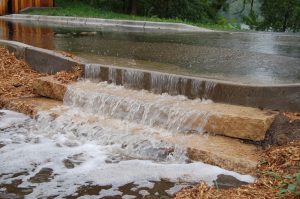Minnetonka
ABOUT
To reduce phosphorus pollution in Lone Lake, the District installed a raingarden in the center of the lower parking lot. Along the edges, three additional raingardens were created. The District completed the project in 2006.
Project Details
The raingardens installed at Lone Lake Park significantly reduce the amount of phosphorus and other pollutants from getting into Lone Lake. Prior to the raingarden installation, over half of the phosphorus entering Lone Lake came from stormwater running off streets and parking lots around the lake.
Raingardens also provide food and shelter for pollinators, like butterflies. The Lone Lake Park project was completed as part of the Minnetonka Lakes Water Quality Improvement Project. The Use Attainability Analysis (UAA) for Lone Lake guided the development of this project.
Lone Lake Park Raingarden Project Fact Sheet (PDF)
Water Quality Benefits
Lone Lake had been experiencing increased addition of nutrients, like phosphorus, from human activities. Too many nutrients can cause increased algal growth, which uses up the oxygen in the water. Carp and bullheads can survive such low oxygen levels, but game fish like walleye and bass begin to die off.
The raingardens decreased the amount of stormwater entering the lake, thereby reducing the amount of pollutants reaching the lake.

